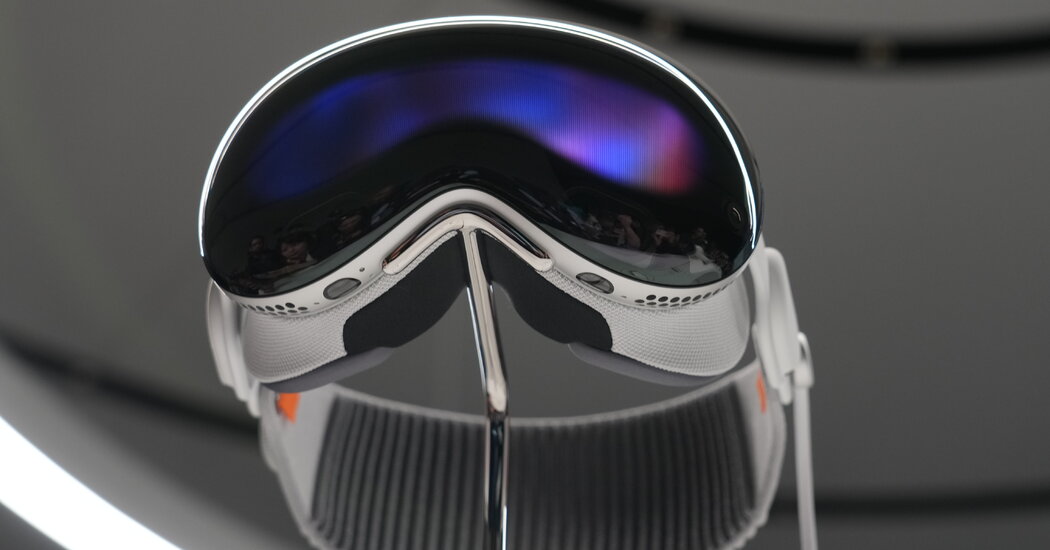
There were pictures, of course, of the goggles looking very sleek against a black background. There was a neat video of assorted happy individuals using the product in the comfort of their pristine rose-tinted homes and anonymous hotel rooms.
But the lack of an actual person strutting the stage in Cupertino, Calif., wearing the product was a notable omission. As was the fact that no one talked about the design except in terms of its functionality — and the fact that the device allows others to see a wearer’s eyes, a real step forward in the world of headset style. (They also didn’t utter the word “wearables.”)
Yet, if any company should know how much aesthetics matter in transforming a piece of tech into an accessory for life, it is Apple. That has always been part of its distinction, beginning with the iMac in its many colors. It’s how the iPod and the iPhone made the leap from consumer goods to markers of taste and identity. With their rounded corners and slim lines, they just looked so good; so sleek and cool. They spurred desire, the way a great handbag does, even before utility is taken into consideration.
And there may be no device Apple has made where aesthetics will matter as much as on this one.
There’s no hiding it. This may be why tech companies have struggled with glasses, an accessory they are seemingly convinced is some sort of next frontier in personal tech, but which no one has ever quite cracked: not Google with its glasses or Meta with its Ray-Ban collaboration or its Balmain x Oculus. If the eyes are the windows to the soul, what you put around them matters in a sort of profound way.
By making the Vision Pro look like goggles, Apple is wading into the shoals of pre-existing stereotypes, personality clichés and history. We choose glasses for all sorts of reasons: to look smart, to look cool, to look glamorous; to look like Gloria Steinem or Jack Nicholson or John Lennon. Most of all, to look individual. And walking around with half your face covered by glass, no matter how swirly the screen, is a signifier for pod people. (On the other hand, if you secretly harbor fantasies of looking like Eileen Gu, this may be for you.)
To be fair, maybe that will change. Maybe by the time the headset arrives in stores next year, priced at about $3,500, the headstraps will be available in a variety of colors and materials, and the device itself will come in a shade other than putty, allowing some form of self-expression. Maybe it will be possible to bedazzle the goggles (that would be fun) or add stickers or decorate the cord. Apple has clearly worked pretty hard on the fit, with all sorts of adjustable components, which is something. And it weighs only about a pound.






